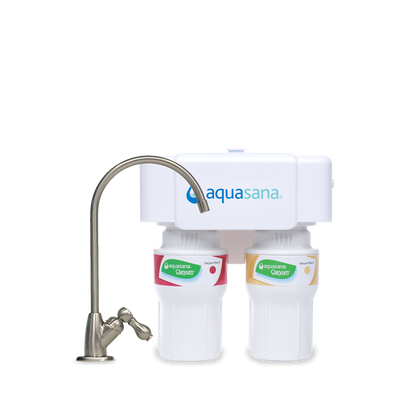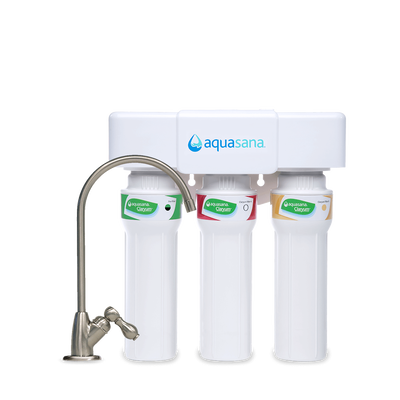Everything in moderation, they say. It makes sense. The occasional chocolate bar won’t pack on the pounds and fruit and veggies are an incredibly important part of most diets as long as they are portion controlled.
Alas, similar logic doesn’t extend to water in quite the same way. Of course, it’s possible to drink too much water and subsequently wind up developing water intoxication (rare, but yikes!). But outside of this unique scenario, you don’t really need to worry about moderating the amount of water you’re drinking. Someone who drinks a substantial amount of water is lauded as a person with healthy habits. But here’s the catch. Water, as it’s treated today, contains small amounts of chemicals that rid it of bacteria. And drinking water with these chemicals is safe – in moderation.

Chlorine is used to remove microscopic bacteria from the water supply.
One such chemical, chlorine is the most common water treatment additive in the United States – and for good reason. Since cities in the United States began treating drinking water with chlorine in 1908, waterborne diseases, including typhoid and cholera, decreased significantly. Before chlorine water treatment began in the U.S., 25 out of 100,000 people died from typhoid fever annually. But in 2015, there were just 305 cases of typhoid fever.
What’s changed?
Since 1908, water treatment has come a long way, yet a majority of water treatment facilities still use chlorine to
treat their drinking water supply. Recently, though, treatment plants have begun to move away from
chlorine.
Drinking water is pulled from a number of sources including rivers, lakes, and wells and treated with chemicals to rid it of toxins before it’s sent to the consumer. The treatment process is incredibly important. While chlorine is successful in ridding water of contaminants and bacteria, there are two primary drawbacks that matter to water treatment facilities:
-
It doesn’t perform in mixed company.
A high percentage of dirt or germs in the original water source will react with chlorine to produce chemicals, called disinfection by-products. Some of these by-products, specifically trihalomethanes (THMs), were found to be carcinogenic after a lifetime of exposure.
-
There’s no staying power.
As previously mentioned, water sometimes travels long distances through the pipes. Chlorine disinfects the water effectively, but does not remain in the water for a long period of time such that chlorine wears off, giving bacteria and other chemicals an opportunity to reemerge.
There are also a few reasons why chlorine-treated water may negatively affect your body (that may not factor into a water treatment facility’s calculations).
Chlorine-treated water kills bad bacteria, but it also kills good bacteria. This can be a problem for someone’s overall health and wellness. People rely on good bacteria to digest food and produce vitamins B12 and K. When someone not only drinks chlorinated water, but showers with it and washes their hands with it, the benefits of good bacteria may slowly deteriorate leading to conditions like acne, eczema, rashes, and premature aging.
And if wrinkles in your 30’s aren’t worrisome enough, last year, one study found a correlation between chlorine-treated water and colorectal cancer. The threat of colorectal cancer was tied to the levels of disinfectant byproducts in chlorine-treated water.
In most cases, if no filter is used to rid water of chlorine, your body takes on that responsibility.
DON’T panic
Fortunately, one of the negative effects of chlorine is also a net positive for many of us. The lack of chlorine’s staying power makes it difficult for treatment plants to keep water treated over a long period of time, but it makes it incredibly easy for someone to rid water of chlorine. Chlorine will wear off if chlorine-treated water is left standing for a couple days, but if you’re like many of us and don’t have that much time, boiling tap water will get rid of chlorine in just a few minutes.
Alternatively, water filters mitigate the risk of ingesting chlorine at the outset and do things like add back in those good minerals your body craves. Drink straight from your tap, or from a pitcher filter. Research before choosing your filtration system, as each system filters for different toxins and bacteria, but know that you’re not alone. There are many steps you can take to kick chlorine to the curb and remineralize your water, so you can keep your family safe from the tap, to the shower, to your table.

